12 Nights / 13 Days
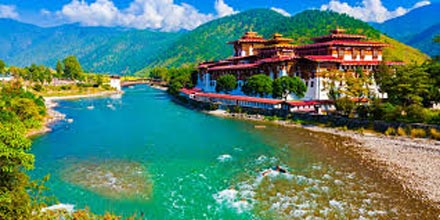
Bhutan is the only country in the world that officially practices Mahayana Buddhism or Vajrayana Buddhism. More than a religion, Buddhism is a way of life in Bhutan. Since time immemorial, Buddhism has shaped local beliefs, culture and identity.
The history of Buddhism began in 7th century AD when the Tibetan King, Songtsen Gempo constructed the first Buddhist temples Kyichu in the Paro valley and Jampa in the Choekhor valley in Bumthang. The growth of Buddhism in Bhutan was then advanced by the great Uddiyana saint Padmasambhava in the 8th century A. D. He thus laid the foundation of one of the most important and unifying forces that has sustained the Bhutanese people and contributed to the evolution of their unique cultural and religious tradition.
Every aspect of Bhutanese life is influenced by Buddhism. Red-robed monks preside over religious ceremonies and rituals—from celebrating weddings, births and the consecration of monasteries, to exorcising spirits from village homes, appeasing the rain gods, or simply welcoming a guest. You will have the opportunity to take part in these special religious ceremonies and rituals being performed by Buddhist monks, nuns, and lamas who live their lives in isolation, devotion and meditation.
Bhutan is the last Himalayan Buddhist culture to have survived globalization. The culture remains vibrant and the environment pristine as Bhutan continues to thrive in the 21st-century. Apart from the majesty and grandeur of the natural surroundings, the environment allows communion with the divine through meditation and contemplation.
This tour grants privileged access to the holiest Buddhist sites in Bhutan. From the famous, majestic Tiger’s Nest (Taktsang) balanced among the clouds high above Paro, blessed by Guru Padmasambhava himself, to Jambay Lhakhang, one of the oldest temples in Bhutan, built by the Tibetan king Songtsen Gempo, this tour provides a true insight to the rich religious culture of Bhutan and experience of spiritually centered culture.
HIGHLIGHTS CENTRAL TRIP
Taktshang (Tiger’s Nest) Monastery:
It is Bhutan’s most iconic landmark and religious site. This monastery is one of the most holy sites in the kingdom and clings impossibly to a sheer cliff face about 3,000 feet above the Paro Valley. It was first built in 1692 at a cave where Guru Rinpoche meditated in the 7th century A.D. Legend states that Guru Rinpoche flew to the site atop the back of a tigress and meditated in the cave for 3 years, 3 months, 3 days and 3 hours in order to subdue evil demons residing within it.
Jakar Dzong:
The Jakar Dzong or the “Castle of the White Bird” dominates the Chamkhar valley and overlooks the town. Constructed in 1549, by the Tibetan Lam Nagi Wangchuk, the Dzong played an important role as the fortress of defense of the whole eastern Dzongkhags. It also became the seat of the first king of Bhutan. A special feature of the Dzong is the approximately fifty meter high Utse or the Central tower, which is distinct from most other Dzongs in Bhutan.
Gangtey Goenpa:
Nestled in the inner Himalayas at about 9,842 feet above sea is the home of highly revered Gangtey monastery that overlooks the wetlands surrounded by subsistence farms & stunningly beautiful natural forest areas & sacred valley.
The valley is also the most significant wintering ground of the rare and endangered Black‐necked cranes in Bhutan and has been protected since time immemorial by the local people’s traditional respect for all living beings. Every year, over 300 of the estimated 500 cranes that migrate to Bhutan, spend their winter months (late October to mid-February) in this valley.
Punakha (The Ethereal Ancient Capital):
It has been inextricably linked with momentous occasions in Bhutanese history. On October 13, 2011 the district of Punakha was home to the auspicious and historical Royal wedding. Punakha served as the capital of the country from 1637 to 1907 and the first national assembly was hosted here in 1953. The Punakha Dzong (Fort) is the second oldest and second largest in Bhutan and one of the most majestic structures in the country.
Kyichu Lhakhang:
It is one of the oldest temples in Bhutan built by Songtsen Goemba, a Tibetan King in the 7th century AD. The king was destined to build 108 temples known as Thadhul- Yangdhul (temples on and across the border) in a day to subdue the demoness that was residing in the Himalayas. The temple is one of the two of the 108 built in Bhutan. A second is in Bumthang known as Jambay Lhakhang also built on the same day.Language Guide (Additional Fee has to be paid)
Luxury Hotel (for the 4 star and 5-star hotel an additional amount should be paid)
Trekking, biking and Kayaking and Rafting (an additional amount has to be paid)
Laundry and international call
Beverage and drinks
Travel Insurance
Donations to Monasteries
Gifts & Souvenirs
Inbound Airfare
The Flight to Paro gives you a breathtaking views of Major Himalaya peaks such as Everest, Kanchenjunga and Makalu, and Bhutan’s own snowy peaks, the sacred Jomolhari, Jichu Drake and Tsherimgang on a clear day.
As you enter Paro valley, you will sweep past forested hills with the silvery Pa Chu (Paro river) meandering down the valley below. Paro Dzong (fortress) and Ta Dzong (watchtower) on the hills above the town will be a fine sight. Our team will receive you at Paro airport. After a warm welcome, our team will then escort you to Thimphu (1 and half hour drive) for a lunch. Thimphu is the capital city of Bhutan with approximately 100,000 inhabitants.
After Lunch,Our team will then escort you to visit Buddha Dordenma Statue, this massive statue of Buddha Shakyamuni measures in at a height of 51.5 meters, making it one of the largest statues of Buddha in the world. The statue is made of bronze and is gilded in gold. The Buddha Dordenma is located atop a hill in Kuenselphodrang Nature Park and overlooks the Southern entrance to Thimphu Valley.
Followed by a visit to Thimphu Memorial Chorten, on a walk. Built in the memory of our late 3rd king of Bhutan Jigme Dorji Wangchuck it is believed that a wished made from deep within heart is being fulfilled. It holds paintings
After Breakfast,
Our team will escort three of you to your meeting hall while remaining will embark on a leisurely hour-long walk to the 18 Century Wangditse monastery, situated atop Thimphu. The Lhakhang houses the statues of the guardian deities Yeshey Goenpo (Mahakala), Palden Lhamo (Mahakali) and Tsheringma (the goddess of longevity). From the monastery you can view the whole Thimphu valley. On your way back from Wangditse, stop by the Motithang Takin Preserve to see the Takin, Bhutan’s National Animal. Followed by a visit to Thimphu Changangkha Lhakhang, The fortress-like temple perched on a ridge above central Thimphu hums with pilgrim activity. It was established in the 12th century on a site chosen by Lama Phajo Drukgom Zhigpo who came to Bhutan from Ralung in Tibet. The Lhakhang houses Chenrizig, an 11-headed, thousand-armed manifestation of Avalokiteswara as the central statue. The prayer books in this Lhakhang are larger than the usual Buddhist texts. It is traditionally popular among the parents with newborns. They come here to get auspicious names for their newborns or blessings for their young children from the protector deity Tamdrin. You too can get an auspicious name for your children from this temple. Our team will then Escort you for a lunch
After Lunch,
Visit Zilukha nunnery Drubthob Goemba. The nunnery is one of the largest nunneries in Bhutan just above the Dzong that overlooks the Thimphu valley. It belongs to Drubthob (The Realized one) Thang Thong Gyalpo from the 15th century. The saint had multiple talents including building bridges and metal works. The nunnery offers short term and long term education to girls and women who are interested to dedicate their lives to serve the society and for the benefit of living and death. These nuns are very much involved in local communities in Bhutan and helping needy families.
Followed by a visit to Pangri Zampa Lhakhang, idyllically located in the middle of a meadow. The temple appeared in Zhabdrung Ngawang Namgyel’s vision which directed him from Tibet to Bhutan. The temple was built by Ngawang Chogyal, the great-grandfather of the Zhabdrung, and was the Zhabdrung residence when he arrived in Bhutan in 1616. Today, the temple is used as an astrologer’s Centre of the state clergy, and is the home to around 100 monks studying astrology. During a visit Pangri Zampa you can learn more about astrology, and also have your personal reading done.
Lastly visit Dorji Phangmo- Living goddess of longevity. In Thimphu, there is a reincarnate Dorji Phangmo and a visit can be arranged for the interested.
After Breakfast,
You will be having a drive to Punakha via Dochula pass. The pass is a popular location among visitors as it offers a stunning 360-degree panoramic view of Bhutanese Himalayan range. The view is especially scenic with snowcapped mountains forming a majestic backdrop to the tranquility of the 108 Druk Wangyal Chortens gracing the mountain pass. Our team will stop there for you to have spectacular views of Majestic Mountain and to take photographs. Our team will then escort you to visit Chimmi Lhakhang on the way, The Temple is popularly known as “the Temple of Fertility”. In founding the site it is said that Lama Kuenley subdued a demon of Dochula with his “magic thunderbolt of wisdom” and trapped it in a rock at the location close to where the Chorten now stands.
Our team will then escort you for a lunch. After lunch
Visit Punakha Dzong built between Pho Chu (Male River) and Mo Chu (Female River). The Dzong has served as the seat of the Government for many years. The Dzong is also known Druk Pungthang Dechen Phodrang (Palace of Great Happiness). Followed by visit to a high reincarnate Lama called Kathog Rinpoche (Precious one) to receive and share some wisdom.
After evening break, Our team will escort you to Punakha Suspension Bridge, one of the longest suspension bridge in Bhutan for a heart pumping with excitement after a long day journey. (Overnight at Punakha)
After Breakfast,
Visit Nalanda Buddhist Institute and interact with monks. Nalanda Buddhist Institute is a small Drukpa Kagyu monastic school (100 students) in Punakha district, Bhutan where on completion of their studies the monks go onto further monastic studies at higher learning institutions. Followed by a drive to Phobjikha.
Followed by a visit Gangtey Monastery, an important monastery of Nyingmapa school of Buddhism, the main seat of the Pema Lingpa tradition. The Monastery's history traces to the early 17th century and back to the prophecies made by the well-known Terton (treasure finder) Pema Lingpa in the late 15th century. The Monastery is one of the main seats of the religious tradition based on Pema Lingpa's revelations and one of the two main Centers of the Nyingmapa school of Buddhism in the country. A Nyingma monastic college or Shedra, Do-ngag Tosam Rabgayling, has been established above the village. (Overnight at Phobjikha)
After Breakfast,
Drive to Bumthang valley (5 hours). The road climbs rapidly through a series of hairpins out of Trongsa and there are great views back to the Dzong and out across the valley. After passing through cultivated fields for a while, the trail re-enters the forest and reach the Yotong La (3400m). Descending to a low point of 2650m at a village called Chumey; the scenery is once again totally different as the route enters the wide-open Bumthang valleys. It takes about an hour to get to the roadside at Chumey, the first of the four valleys in Bumthang (Overnight at Bumthang)
After Breakfast,
Visit Kurjey Lhakhang, one of the most sacred places in the kingdom where Bhutan’s “patron saint”, Guru Rinpoche (Padmasambhava) meditated.
From Kurjey monastery, a tarmac road heads south along the right bank of the river to Jambay Lhakhang. Jambay Lhakhang is one of the oldest temples in the kingdom. It was founded by, Songtsen Gampo, a Tibetan King in the 7th century AD. The king was destined to build 108 temples known as Thadhul- Yangdhul (temples on and across the border) in a day to subdue the demoness that was residing in the Himalayas. The temple is one of the two of the 108 built in Bhutan. A second is Paro Kichu Lhakhang also built on the same day.
After lunch,
Hike to Tamshing Lhakhang, built by Terton (Treasure Revealer) Pema Lingpa, in 1505, the temple is located next to Koenchhogsum temple. One can find beautiful paintings in all the temples and an iron coat of mail (supposed to have been crafted by Pema Lingpa) as well. It is believed that if a person can take a round inside the Lhakhang wearing that coat his or her sin will be washed away.
Followed by visit Jakar Dzong, “the castle of the white bird”, and then take a stroll through Bumthang’s market area before returning to the hotel. (Overnight at Bumthang)
After breakfast,
Drive from Choekhor valley to Tang Valley (2hrs Approx.) En-route Tang valley a short walk to Mebar Tsho “The flaming lake” can be taken where Terton Pema Lingpa discover a treasure. Then drive to Mesethang, where there are school and few shops.
Take a short walk from Mesethang to visit Tang Rimochen Lhakhang, located below an enormous rock, which is a scared place where Guru Rinpoche mediated. A rock in front of the Lhakhang has a body print of Guru and his two consorts. The name Tang Rimochen (an impression of tiger’s stripes) is derived from the tiger stripes that appear on a rock cliff behind the building.
Afterwards, continue the drive to reach Kidzom village, crossing the bridge over Tang Chu River and then climb up to the hill top Ugyen Choeling manor. Ugyen Choeling palace was originally built by Deb Tshokey Dorji, a descendant of Dorji Lingpa in 16th century. The palace itself has been converted into a museum where they collected all the antique pieces of things possess by their great ancestors. In the museum are kept old things which provide a better understanding of life in Bhutan during olden days. (Overnight at Bumthang)
After breakfast,
Drive towards the Ura valley which is 42 kilometers from Bumthang. The road reaches the Ura Shelthangla from where a magnificent view of Bhutan’s highest peak, Gangkar Puensum (7,500 m) can be spotted. The road then descends into Ura valley by long loops across fields and pastures. Ura’s main occupation is raising sheep’s, yaks and the introduction of potato farming has brought a certain degree of prosperity of people.
In Ura, visit Ura Lhakhang followed by a picnic lunch at one of many inviting spots. Then drive back to Bumthang and take rest over a long day journey (Overnight at Bumthang)
After Breakfast,
Begin the day with Bumthang market tour and drive to Wangdue with a visit to Trongsa Dzong Enroute. Built in 1648, it was the seat of power over central and eastern Bhutan. Both the first and second kings of Bhutan ruled the country from this ancient seat. All four kings were invested as Trongsa Penlop (“governor”) prior to ascending the throne. The Dzong is a massive structure with many levels, sloping down the contours of the ridge on which it is built.
Then drive to Wangdue which is about 6 hours’ drive. With its diverse climate and rich natural resources Wangdue is home to many rare and exotic animals like Red Panda, Tiger and Leopard. Villages in Wangdue are also known for their slate and stone. (Overnight in Wangdue)
After breakfast,
Drive back to Paro which is about 4 hours’ drive where our team will escort you for a lunch.
After Lunch,
Visit Paro Ta Dzong, the watch tower of Paro Dzong and Paro district. It has played its vital role during the times of Tibetan invasion. It now houses the national museum and holds the collection from the ancient time. Then walk down for a few minutes and visit
Rinpung Dzong built in 1645 is the Central monastic body of Paro District. The Dzong is now being used as an administration center and school for monks. Then walk down to Rinpung Bridge (Traditional Bridge), oldest bridge in Bhutan. (Overnight at Paro)
After breakfast,
Drive over the Chelela pass (3899 m). From the pass, good view of the Himalayan Ranges and the valley beyond can be spotted. Then continue the drive towards Haa. Haa is made up of five counties and was closed to outside world until 2002. There is a military camp by the Indian Army.
In Haa valley, visit Wangchuck Dzong dating back to 1915 and Lhakhang Nagpo (Black temple) is said to have been built by pigeon emanation of King Songtsen Gempo in the 7th century and Lhakhang Karpo (white temple). After the visit drive back to Paro. (Overnight at Paro)
Have an early morning hike to Taktshang to avoid the sun. Taktsang Monastery has to be the monastery with the most outstanding setting in Bhutan. Set on a vertical cliff face at 2950m above sea level, it defies all engineering logic. For the energetic, hike 2 hours up to get a more dramatic view of the monastery. (The hike demands a certain level of fitness and a pony ride to the monastery can be arranged at additional cost). Our team will then escort you for a lunch and
After lunch,
Just on the outskirts of Paro town, visit Kyichu Lhakhang, one of the oldest temples in Bhutan and have the opportunity to meet the local villages in a local farm house. (Overnight at Paro)
After breakfast,
Our team will escort you to the airport to catch the onward flight.
Bhutan Entire Season Travelers is a respected name in the tourism industry of Bhutan. This travel company is the brainchild of Mr. Nim Daw. His consistent efforts resulted in the establishment of this company in the year 2013 in Thimphu. Under his guidance, we've been flourishing speedily and are one of the fastest growing travel companies in Bhutan Read More...

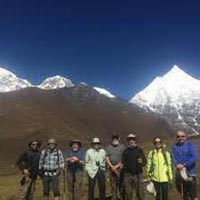 13D/12N
13D/12N
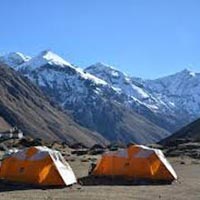 11D/10N
11D/10N
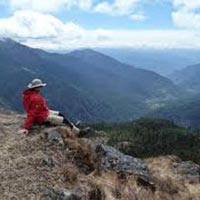 9D/8N
9D/8N
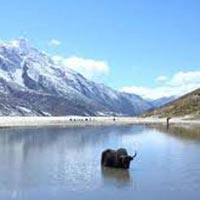 10D/9N
10D/9N
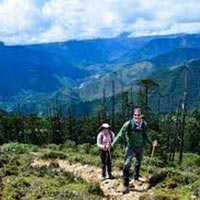 12D/11N
12D/11N
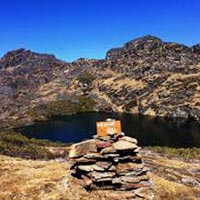 7D/6N
7D/6N
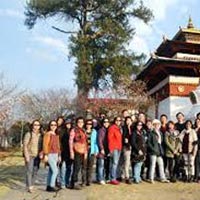 7D/6N
7D/6N
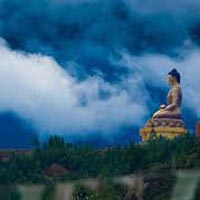 9D/8N
9D/8N
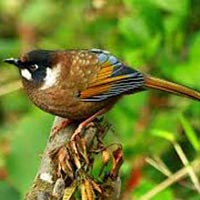 7D/6N
7D/6N
 13D/12N
13D/12N
Guwahati - Shillong - Tawang - Cherrapunji - Bomdila - Golaghat - Mandla
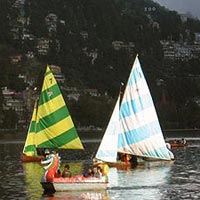 13D/12N
13D/12N
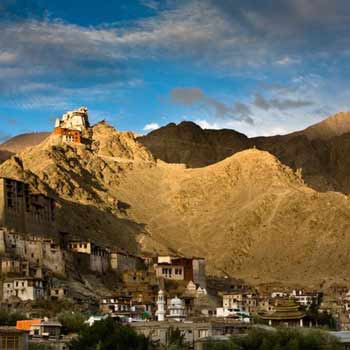 13D/12N
13D/12N
12 Night / 13 Days Haven Himachal Family..
Shimla - Sangla - Kalpa - Kinnaur - Manali - Dharamshala - Dalhousie - Amritsar
 13D/12N
13D/12N
 13D/12N
13D/12N
Shimla - Kulu - Manali - Dharmshala - Da..
Shimla - Manali - Dalhousie - Amritsar - Dharamshala - Kulu
 13D/12N
13D/12N
Rajasthan 12 Nights 13 Days Tour
Bikaner - Jaisalmer - Jodhpur - Mount Abu - Chittorgarh - Pushkar - Jaipur - Udaipur
 13D/12N
13D/12N
Agra - Jaipur - Jodhpur - Jaisalmer - New Delhi - Udaipur
 13D/12N
13D/12N
Golden Triangle Tour with Khajuraho
New Delhi - Jaipur - Fatehpur Sikri - Agra - Jhansi - Orchha - Khajuraho - Varanasi
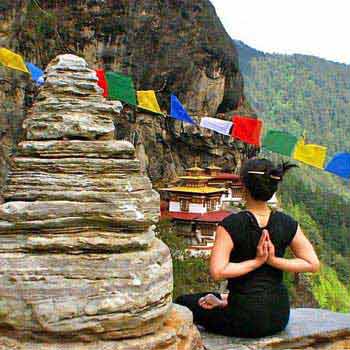 13D/12N
13D/12N
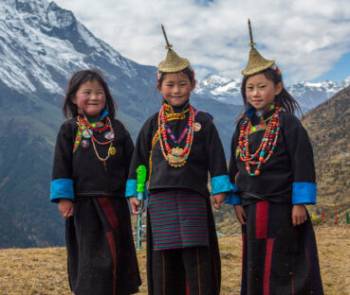 5D/4N
5D/4N
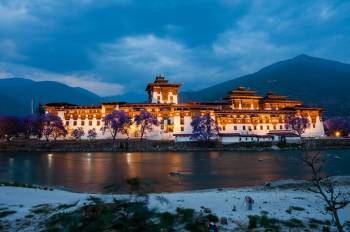 7D/6N
7D/6N
6 Nights/ 7 Days - Bhutan Happiness Tour
Punakha - Bumthang - Paro - Thimphu - Phobjik
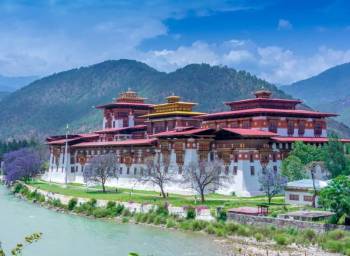 7D/6N
7D/6N
 20D/19N
20D/19N
20 Days Land Package Country Tour BHUTAN..
Punakha - Paro - Phuntsholing - Bagdogra - Bumthang - Mongar - Trashigang - Trongsa..
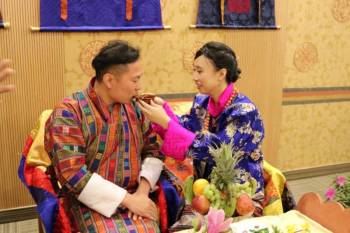 4D/3N
4D/3N
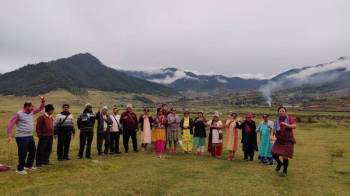 6D/5N
6D/5N
 7D/6N
7D/6N